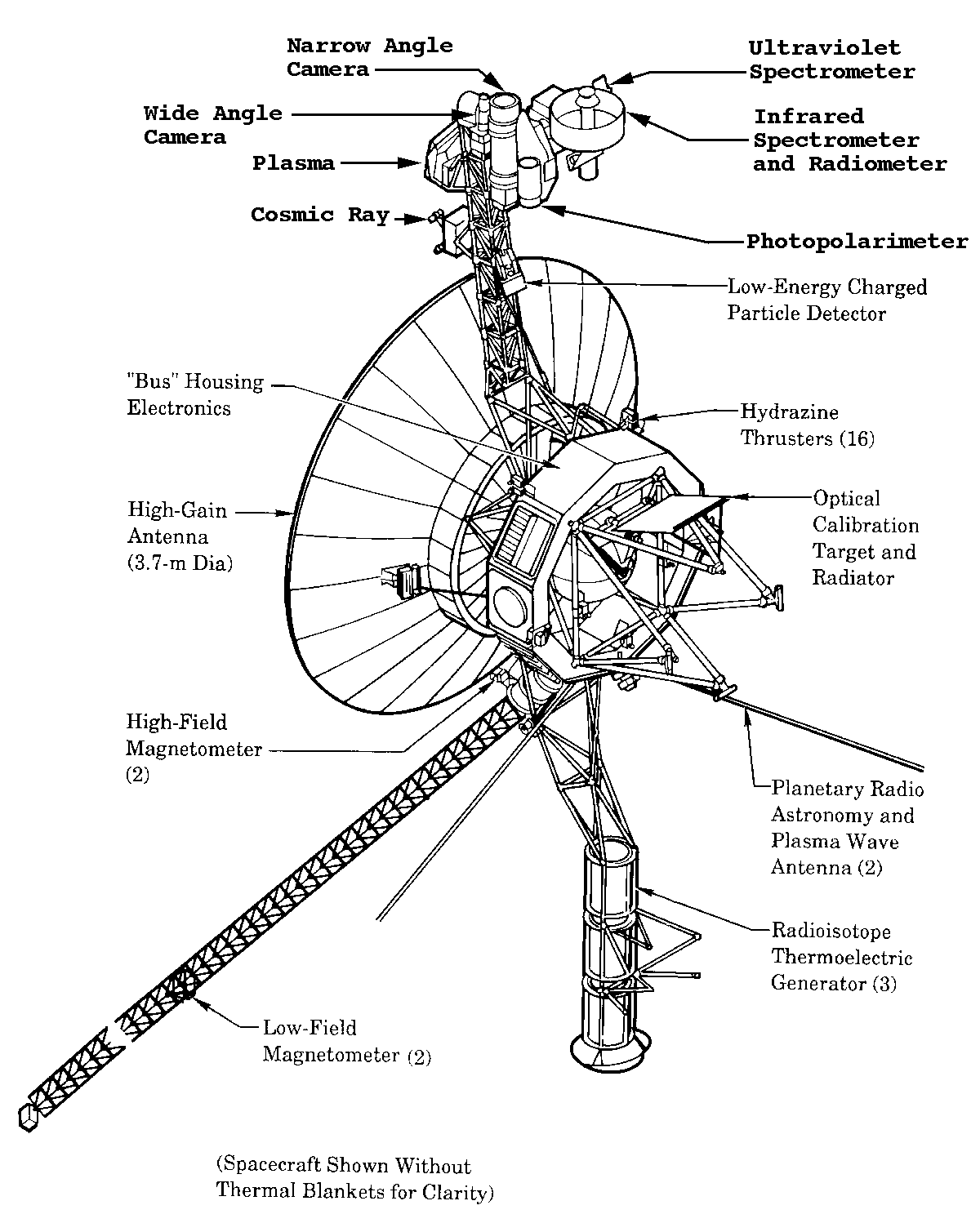
Schematic drawing of a Voyager Probe (courtesy of arc.nasa.gov)
The Voyager Spacecraft
Originally designed for a 5 year mission, the two Voyager spacecraft still provide NASA with scientific data about the outer solar system to this day. The probes are a tribute to the engineers and scientists who designed them and put them into space.
Voyager 1 and Voyager 2 are physically identical craft. Both spacecraft are based on a small octagonal block housing the electronics and to which the thrusters are attached. The large high-gain antenna is attached to the flat side of the block. Three instrument arms and two antenna protruded from the base block.

Schematic
drawing of a Voyager Probe (courtesy of arc.nasa.gov)
Since the role of both spacecraft is that of scientific exploration, both probes were outfitted with 10 scientific instruments to allow them to survey planets, moons, interstellar space, and whatever else they will encounter. These instruments included devices such as magnometers, plasma detectors, particle detectors, cosmic ray detectors, and wide and narrow angle lens cameras (see http://ringmaster.arc.nasa.gov/voyager/hardware/spacecraft.html). In order to conserver precious battery life, the only instrument still powered up on either craft is the Ultraviolet Spectrometer on Voyager 1. This instrument is active in order to investigate anomalous UV reader in Voyager 1's vicinity. Although the probes may be nearing the end of their useful scientific life, they still have a lot of exploring left to do.
[Home]
[Voyager Program History] [Voyager Probe Technology] [Voyager Images] [The Golden Record] [Where Are They Now?] [Bibliography/Links]